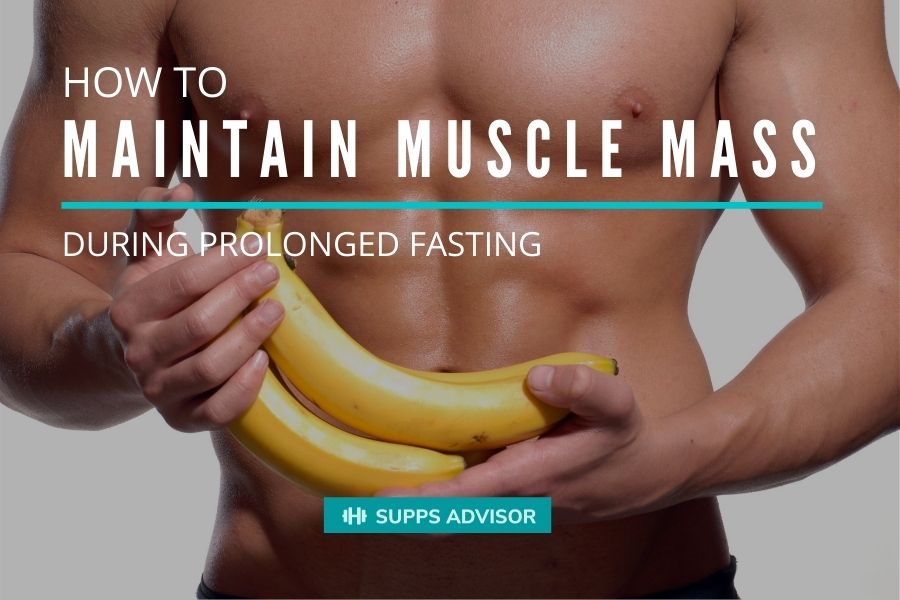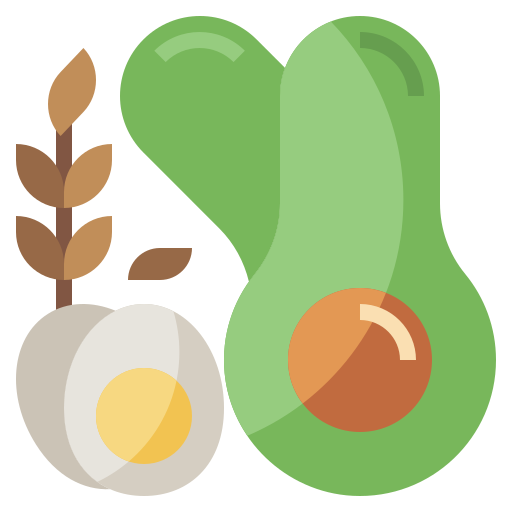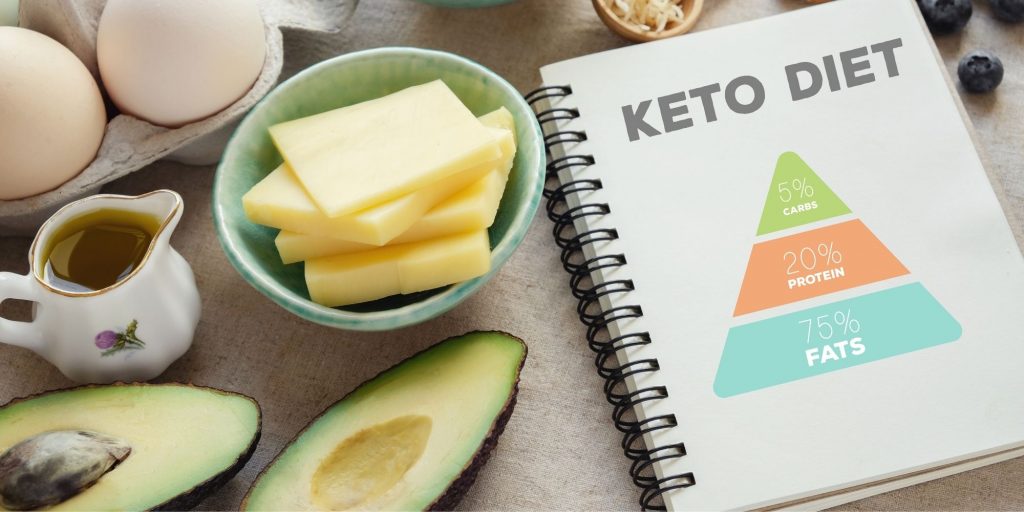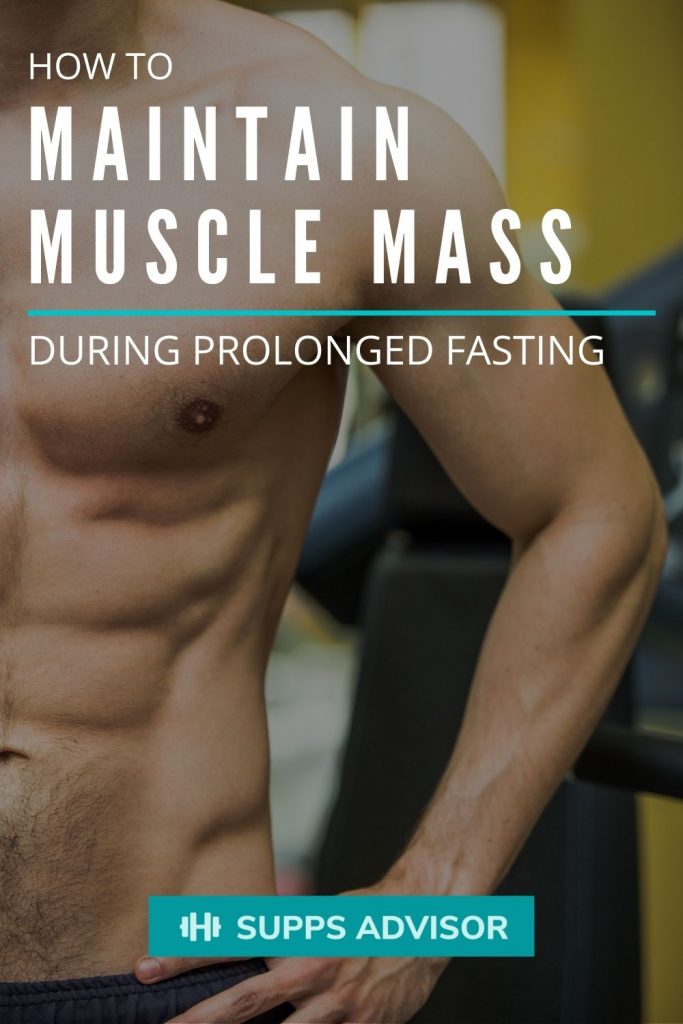After a decade of going to the gym, I have tried a ton of fat…
TOC
How to Maintain Muscle Mass During Prolonged Fasting

06/24/2021 · 6 min reading
In recent years, prolonged fasting (a few days or more) has been connected with a lot of health benefits. So it’s probably a good idea to do a longer fast, at least every once in a while. Overall, it’s certainly possible to at least maintain your muscle mass when you fast. And if you play your cards just right, you may even be able to use fasting to your advantage to build more muscle for better bone health.
But what if you’re trying to build muscle mass? Will doing a prolonged fast sabotage your efforts?
Today I’ll explain a few tips you can use to help maintain muscle mass during prolonged fasting.
Overall, it’s certainly possible to at least maintain your muscle mass when you fast. And if you play your cards just right, you may even be able to use fasting to your advantage to build more muscle.

1. Use Ketones To Your Advantage
Over the first two or three days of a prolonged fast, your body gradually transitions from using mainly blood sugar for energy, to using mainly ketones (and fatty acids).
During that transition, a process called “gluconeogenesis” turns protein and certain fat molecules into glucose, to maintain your blood sugar.
Why does this matter?
Because it means the transition stage of fasting is when you’re relying more on your body’s protein stores for energy. That can include muscle.
To Preserve Muscle, Get Your Ketones Up in Advance
Instead of just waiting around for your ketones to become elevated during a prolonged fast, why not get a head start?
Basically, you can do this by eating a ketogenic diet, for at least a few days before you start your fast. But longer is better.
If you can do at least one week of nutritional ketosis while measuring your ketones, you’ll have both a solid start on ketosis and an accurate idea how things are going.
Having higher ketones from the start not only makes fasting easier, it also helps preserve your muscles by reducing your need for gluconeogenesis.
Interestingly, as your body gradually adapts to using ketones, ketones become more efficient at preserving muscle mass. So if you’re thinking about doing prolonged fasting with any regularity, you might also consider doing a ketogenic diet for a longer duration of time, so you can more fully adapt.

Ketones Directly Preserve Muscles
Another cool thing about ketones is that they send a signal to your muscles not to break down. In other words, they inhibit muscle protein degradation.
Basically, your body knows that when you’re fasting it’s better to use body fat for energy rather than using muscle for energy. And ketones are one of the mechanisms that help you do that.
Because of that signal from ketones, your body won’t “burn” muscle when you fast, but instead try to use protein from other sources. For example, it can find protein in the connective tissue under your skin.
Alternative: Consider Trying Exogenous Ketones
If you don’t want to eat a ketogenic diet before starting your prolonged fast, another option would be to try taking a ketone supplement.
It hasn’t been studied as much, but in theory you could take a ketone supplement during the first few days of your fast and not only feel better, but also help preserve some of your lean mass.
Here’s the gist:
The ketones would provide an alternative energy source which could reduce your need for blood sugar, and hence reduce your need for protein (from muscles or elsewhere in your body).

2. Continue Exercising During (& After) Your Fast
Another way you can preserve muscle during a prolonged fast is by continuing to exercise.
Amazingly, even if you’re not eating anything at all, exercise still promotes muscle growth.
Now, I’m not saying you can significantly build up your muscles during a prolonged fast. That’s probably wishful thinking. But by continuing to exercise, you can likely stimulate muscle growth enough to balance things out pretty well, and at least maintain your current muscle mass.
Protein Comes from Various Sources, Not Just Muscle
You may be wondering where the protein would come from to build muscle, if you’re not eating anything.
Recall that protein exists in many different places in your body. All of your organs, your connective tissue, and so on. It’s not just the muscles.
During a prolonged fast, your body will be gradually breaking down various tissues, shrinking various organs. And some of the protein it finds can be used to maintain muscles.
That’s assuming of course that you keep using your muscles — that’s how your body knows you need to maintain them!
You’ll also find some protein inside your cells, through a process called autophagy. Basically, that’s when your body does some scavenging to look for older worn out proteins that it can recycle.
Fasting is a major stimulator of autophagy, probably because your body knows it needs to find protein somewhere!
Continue Exercising After You Break Your Fast
One cool thing about fasting for multiple days is that it causes your body to make more growth hormone.
When you finally break your fast, growth hormone can help rebuild some of the organs and tissues that were broken down. It can also help build (or rebuild) your muscles.
Growth hormone probably won’t build your muscles on its own. But if you keep working out, it can help!

3. Consume Adequate Protein Before and After Your Fast
If you’re doing a lot of training and trying to build muscle, you’re probably accustomed to eating plenty of protein.
But sometimes people who are trying to lose weight kind of forget they need to FEAST in between fasts.
So after your fast, focus on unprocessed foods that include plenty of protein.
Obvious sources include meat, fish, poultry, eggs, and dairy products.
You can also get a reasonable amount of protein from plant sources, though it takes a little bit more effort and planning.
Even if your main goal for doing a prolonged fast is to lose weight, it still helps to eat enough afterwards, to keep your metabolism up. So don’t try to diet, and then fast, and then do more dieting!
Start Slowly That Very First Meal
Since I’m talking about feasting after a prolonged fast, this is probably worth mentioning:
If you haven’t eaten for several days, your stomach shrinks a little bit and your digestive system is mostly resting.
So the very first time you eat, start with something really small. Like a handful of nuts, or a couple tablespoons of chia seeds soaked in water, for example.
Eat something small, then wait a few hours and see how you’re feeling. If your stomach is feeling alright, then try something a little bit bigger.
You may be tempted to eat a bunch of food right off the bat. But if you do that, you’ll probably get a lot of stomach discomfort. You’ll also be at a higher risk of something called “refeeding syndrome”, which is when you have too many electrolytes moving around right after you break your fast.
The main way to mitigate all these issues is simply to take it really slow if you’ve been fasting for more than a few days.
Final thoughts
Prolonged fasting has a lot of cool health benefits, so even if your major fitness goal is to build muscle, it’s probably worth it to do a longer fast every once in a while – perhaps about once per year.
While you may not be able to build a huge amount of muscle during your fast, with the tips I’ve shared today you can probably at least maintain the muscle you’ve built.
Maintaining your muscle during a prolonged fast will be a little more difficult if you are super lean or super muscular (or both).
But if you play your cards right, you can probably maintain at least most of your muscle mass, and rebuild any that you’ve lost fairly quickly afterwards.
Disclaimer: Depending on your health status, you may need medical supervision during any type of prolonged fasting.

Alex is a former Personal Trainer and the go-to guy when it comes to his blog - SuppsAdvisor.com. Every piece of content is thoroughly checked, rechecked, and then published by Alex!
He is very much into sports activities such as tennis, skiing, surfing and of course working out.
His motto: be active, healthy, and happy!
Related Posts
-
Clear Muscle Review
-
Muscle Feast Grass Fed Whey Isolate Review
I used to struggle with obesity and couldn’t engage in strenuous activity. My doctor warned…

